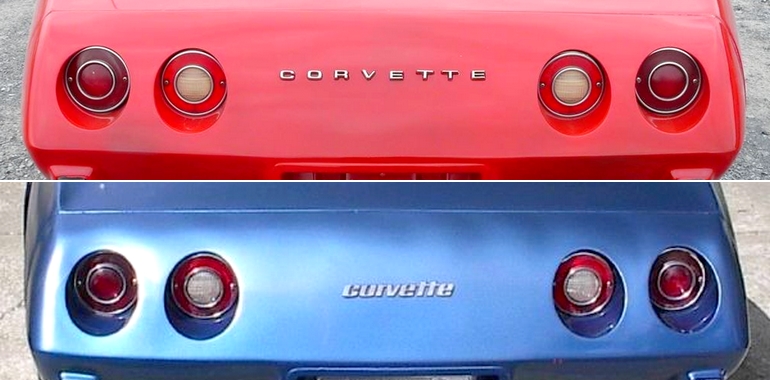

- 1969 corvette front license plate bracket manual#
- 1969 corvette front license plate bracket windows#
There was the 元6, a 390 hp (291 kW) version with a Rochester 4-barrel carburetor The L68, a 400 hp (298 kW) motor with a Holley triple 2-barrel carb set up (3 X 2 tri-power) The L71, generating 435 bhp (441 PS 324 kW) at 5,800 rpm and 460 lb⋅ft (624 N⋅m) at 4,000 rpm of torque also with a tri-power The L89 option was the L71 engine but with much lighter aluminum cylinder heads rather than the standard cast iron.

Also available were several variants of the big-block 427 cu in (7.0 L) V8 engine, that taken together made up nearly half the cars. The engine line-up included the L79, a 350 hp (261 kW) high performance version of the 327 cu in (5.4 L) small-block. The M22 “Rock Crusher”, a heavy duty, close-ratio 4-speed gearbox, was also available for certain applications.
1969 corvette front license plate bracket manual#
The 4-speed manual was available in M20 wide-ratio or M21 close-ratio transmission versions. The 元0, a 327 cu in (5.4 L) small-block V8 engine rated at 300 hp (224 kW) and a 3-speed manual transmission were standard, but only a few hundred 3-speed manual equipped cars were sold. The new optional Turbo Hydramatic 3-speed automatic transmission ( RPO M40) replaced the two-speed Powerglide. The engine line-up and horsepower ratings were also carried over from the previous year as were the 3 and 4-speed manual transmissions. The chassis was carried over from the second generation models, retaining the fully independent suspension (with minor revisions) and the four-wheel disc brake system. All cars ordered with a radio, like the C2 cars, continued to be fitted with chrome-plated ignition shielding covering the distributor to reduce interference. New options included a rear window defroster, anti-theft alarm system, bright metal wheel covers, and an AM-FM Stereo radio. The battery was relocated from the engine area to one of three compartments behind the seats to improve weight distribution. A fiber-optic system appeared on the console that monitored exterior lights and there was no glove box. Auxiliary gauges were clustered above the forward end of the console and included oil pressure, water temperature, ammeter, fuel gauge, and an analog clock. In the cabin, a large round speedometer and matching tachometer were positioned in front of the driver.
1969 corvette front license plate bracket windows#
Side vent windows were eliminated from all models, replaced with "Astro Ventilation", a fresh air circulation system. Front fenders had functional engine cooling vents. The door handles were flush with the top of the doors with a separate release button. The enduring new body's concealed headlights moved into position via a vacuum operated system rather than electrically as on the previous generation, and the new hide-away windshield wipers utilized a problematic vacuum door. Included with coupes were hold down straps and a pair of vinyl bags to store the roof panels, and above the luggage area was a rear window stowage tray. A soft folding top was included with convertibles, while an auxiliary hardtop with a glass rear window was offered at additional cost. As before, the car was available in either coupe or convertible models, but coupe was now a notchback fitted with a near-vertical removable rear window and removable roof panels ( T-tops). GM had tried their best to keep the appearance of the upcoming car a secret, but the release of Mattel's die-cast Hot Wheels line several weeks before the C3's unveiling had a certain version of particular interest to Corvette fans: the "Custom Corvette", a GM-authorized model of the 1968 Corvette.įor 1968, both the Corvette body and interior were completely redesigned. The "Shark" has the distinction of being introduced to the motoring public in an unorthodox-and unintended-fashion. It was intended from the beginning that the rear window and that portion of the roof above the seats to be removable. The C3 also adopted the "sugar scoop" roof treatment with vertical back window from the mid-engined concept models designed by the Duntov group. The concept car's name was later changed to Manta Ray. The resulting lower half of the car was much like the Mako II, except for the softer contours. Once the mid-engined format was abandoned, the Shinoda/Mitchell car was sent to Chevrolet Styling under David Holls, where Harry Haga's studio adapted it for production on the existing Stingray chassis.

Executed under Bill Mitchell's direction, the Mako II had been initiated in early 1964. The Corvette C3 was patterned after the Mako Shark II designed by Larry Shinoda.


 0 kommentar(er)
0 kommentar(er)
